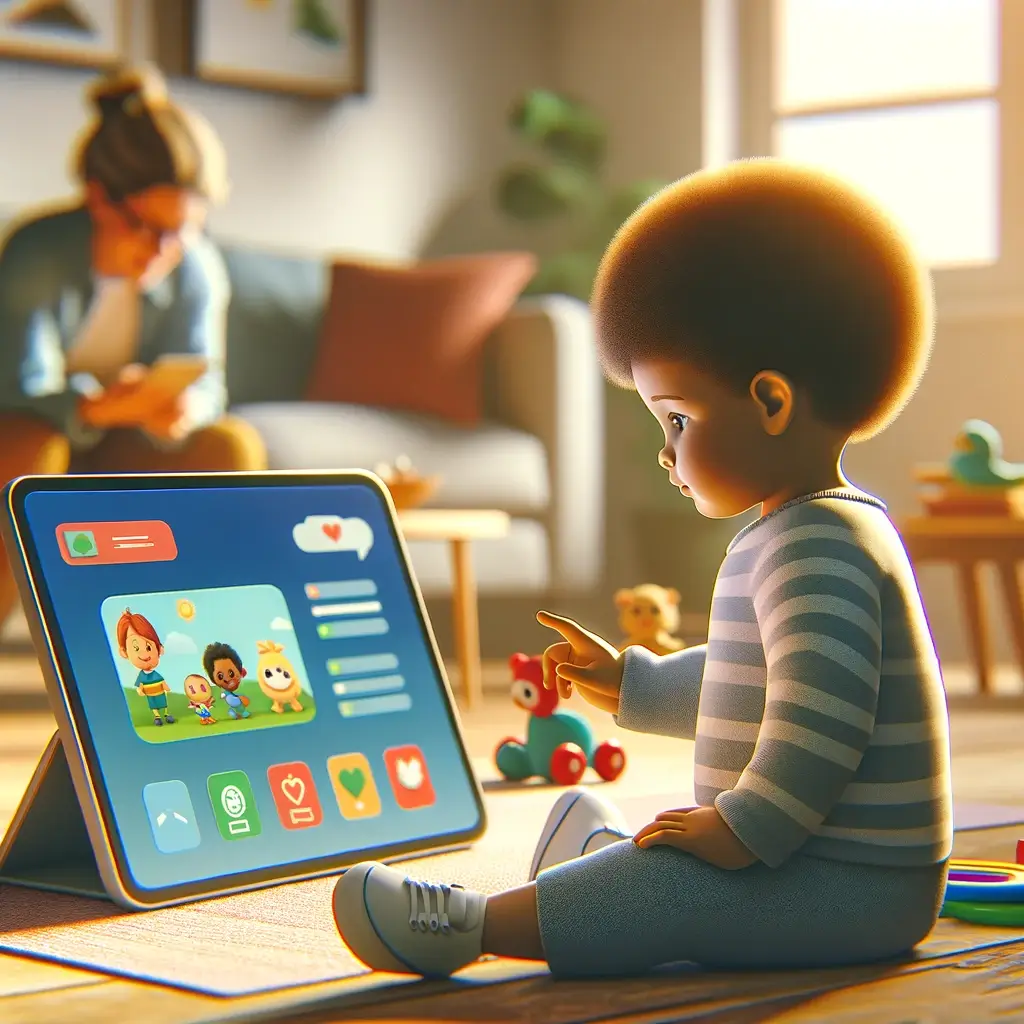The Digital Age Impact on Early Development
In today’s technology-driven society, digital screens are almost ubiquitous, becoming an integral part of daily life—even for toddlers. Devices such as tablets, smartphones, and televisions are often used to entertain or educate young children. However, this surge in screen time has sparked significant concerns among pediatricians, psychologists, and educators regarding its potential effects on early childhood development, especially language acquisition.
Critical Language Development Period
Language development in toddlers is a crucial milestone, typically marked by rapid learning and social interaction. During the first three years of life, toddlers acquire foundational communication skills through verbal exchanges, nonverbal cues, and play. Introducing screens into this delicate process has raised questions: Does screen time hinder or enhance language development? Can educational programming compensate for lost social interactions, or do screens inherently reduce the richness of linguistic experiences?
Understanding Screen Time Impact
Emerging research paints a nuanced picture, showing that not all screen time is created equal. Factors such as content quality, engagement level, timing, and parental involvement play critical roles in determining whether screens act as a hindrance or a supplement to language growth. By diving into the latest studies and expert recommendations, this article explores the impact of screen time on toddler language development, offering actionable strategies to foster a balanced and language-rich environment.
Latest Research Findings
The relationship between screen time and toddler language development has been extensively researched in recent years. Notable studies highlight several key findings:
Interactive vs Passive Screen Usage
Interactive vs. Passive Screen Time A 2024 study in JAMA Pediatrics involving 2,500 toddlers found stark differences in outcomes based on screen usage. Interactive screen activities with educational apps significantly enhanced vocabulary acquisition and verbal interactions. In contrast, passive screen time with non-educational videos correlated with a 45% reduction in verbal exchanges (JAMA Pediatrics, 2024).
Expert Perspective on Screen Interaction
Dr. Sarah Thompson, a developmental psychologist, emphasizes, “Interactive formats actively engage toddlers, making screen use more akin to real-world communication. Passive viewing lacks this essential dynamic, potentially delaying critical language milestones.”
Impact of Content Quality
Content Quality Matters Research published in the Journal of Pediatric Communication (2024) revealed that screen content plays a pivotal role in language outcomes:
Educational Content Benefits
High-quality, age-appropriate programming led to a 35% improvement in language skills compared to non-educational media. Background television exposure reduced toddlers’ word learning and verbal interactions by 40%, emphasizing the importance of focused, intentional screen use.
Screen Time Duration Effects
The timing and duration of screen exposure also significantly influence its effects. Evening screen use was associated with poorer vocabulary retention, likely due to its interference with routines such as bedtime stories and interactive play. Furthermore, toddlers exposed to more than two hours of screen time daily were 65% more likely to experience language delays than those with limited screen use (NIH-funded study, 2024).
Identifying Language Development Issues
Speech-language pathologist Dr. Michelle Wong identifies key indicators of screen-related language delays:
Recommendations for Screen Time Management
To mitigate the risks of excessive screen use while leveraging its educational potential, parents can adopt the following strategies:
Technology Usage Guidelines
Technology Management:
Engagement Strategies
Interactive Engagement:
Alternative Activities for Development
Language-Rich Alternatives:
Professional Support Guidelines
If a toddler exhibits significant language delays, parents should consult a speech-language pathologist or pediatrician. Signs such as regression in verbal skills or strong emotional reactions to screen restrictions warrant professional evaluation.
AAP Screen Time Guidelines
The American Academy of Pediatrics (AAP) provides clear guidelines on screen use for young children:
Final Thoughts on Screen Time Impact
The role of screen time in toddler language development is complex, shaped by factors such as screen type, content quality, and the presence of interactive elements. While screens are a reality of modern parenting, they need not hinder language acquisition if managed thoughtfully. Parents can strike a balance by prioritizing high-quality, interactive content and language-rich alternatives like reading and play.
Summary and Expert Perspective
By following evidence-based strategies and professional guidelines, families can create a nurturing environment that supports toddlers’ communication skills in a technology-saturated world. As Dr. Emily Roberts from the Child Development Institute aptly states, “The key lies in mindful management—ensuring screens supplement, not replace, critical interactions that foster language growth.”
Source Citations
References
American Academy of Pediatrics Guidelines. (2024). Retrieved from [AAP Website].
JAMA Pediatrics. (2024). “Interactive vs. Passive Screen Time in Toddlers.”
Journal of Pediatric Communication. (2024). “Screen Timing and Content Quality Effects on Early Development.”
NIH Toddler Development Study. (2024). “Language Delays and Screen Exposure in Early Childhood.”
Child Development Institute Research Review. (2024). “Interactive Media’s Role in Early Language Acquisition.”
